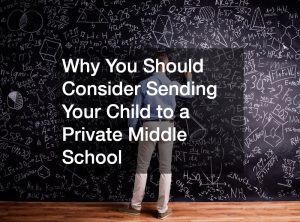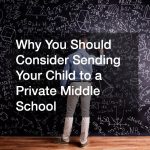Education is a fundamental right for all individuals, including those with disabilities. In the United States, approximately 7.2 million students with disabilities are enrolled in special schools, which is about 15% of the student population. And because these students have special needs, special learning methods are essential to ensure these students receive the necessary education. One approach that has shown great promise is associative learning.
Associative learning is a type of learning that involves making connections between new information and existing knowledge. This process allows individuals to retain better and apply what they have learned. For students with disabilities, associative learning can be particularly effective, as it helps to bridge the gap between their existing knowledge and new information.
Research has shown that students with disabilities who receive instruction using associative learning methods have improved academic performance and increased engagement in the learning process. Associative learning techniques can be tailored to meet the specific needs of each student, making it a versatile approach that can be used across a range of disabilities and learning styles. This article will explore the concept of associative learning and how it can be used to support students with disabilities in achieving their educational goals.
Understanding Students with Disabilities

According to the Americans with Disabilities Act (ADA), a disability is a physical or mental impairment substantially limiting one or more significant needs. These impairments can include hearing, vision, mobility, and cognitive functioning.
In the classroom, students with disabilities face unique challenges that can impact their learning outcomes. For example, a student with a hearing impairment may struggle to follow lectures or participate in classroom discussions. On the other hand, a student with a learning disability may have difficulty with reading comprehension or written expression. Additionally, students with disabilities may experience social isolation or stigma, leading to decreased motivation and engagement in the learning process.
Statistics show that students with disabilities are at a higher risk for academic underachievement and dropping out of school compared to their peers without disabilities. According to a report by the National Center for Learning Disabilities, in the 2017-2018 academic year, the high school graduation rate for students with disabilities was 67.1%, compared to 85.3% for students without disabilities.
Educators need to recognize the unique needs and challenges of students with disabilities and provide appropriate accommodations and support. By doing so, students with disabilities can have an equal opportunity to succeed academically and reach their full potential.
The Role of Associative Learning in Supporting Students with Disabilities
Associative learning is a type of learning that involves making connections between new information and existing knowledge. This process allows individuals to retain better and apply what they have learned. For students with disabilities, associative learning can be particularly effective, as it helps to bridge the gap between their existing knowledge and new information.
There are several examples of how associative learning can be applied in the classroom to support students with disabilities. For instance, teachers can use visual aids, such as pictures or diagrams, to help students with learning disabilities better understand complex concepts. Similarly, teachers can use repetition or mnemonics to help students with memory impairments better remember important information.
One of the primary benefits of using associative learning for students with disabilities is that it can help them make connections between new information and their existing knowledge. It can lead to improved retention and application of information and increased engagement and motivation in the learning process.
However, there are also potential drawbacks to using associative learning for students with disabilities. Some students with disabilities may have difficulty generalizing information learned through associative learning to new situations. Additionally, some students may struggle with the abstraction required for some types of associative learning, such as analogies or metaphors.
Examples of Associative Learning Strategies for Students with Disabilities
Visual Aids
Visual aids can be an effective way to support students with disabilities in the classroom. They can help students better understand and retain information by visually representing concepts or ideas. For example, teachers can use diagrams, charts, or pictures to illustrate complex topics.
Research has shown that the use of visual aids can have a positive impact on student learning outcomes. According to a study published by the US Department of Education, students who received instruction with visual aids scored significantly higher on tests than those without visual aids. Examples of visual aids that can be used in the classroom include:
- Graphic organizers, which help students organize and categorize information
- Mind maps, which help students visualize connections between ideas
- Videos, which can provide a visual representation of concepts or topics
Multisensory Learning

Multisensory learning is another associative learning strategy that can be particularly effective for students with disabilities. This approach involves engaging senses, such as sight, sound, and touch, in the learning process. Students can use manipulatives, such as blocks or puzzles, to learn math concepts or use tactile materials, such as sand or clay, to learn about different textures.
A study published in the Journal of Education Practice found that students with reading disabilities who received instruction using multisensory techniques had higher reading achievement scores than those who received traditional instruction. Examples of multisensory learning strategies that can be used in the classroom include:
- Using manipulatives or tactile materials to teach math or science concepts
- Incorporating music or sound effects to reinforce learning
- Using movement, such as dance or yoga, to engage the body in the learning process
The Importance of Collaboration in Using Associative Learning Strategies
Collaboration between educators, special education professionals, parents, and caregivers is critical in ensuring the effective use of associative learning strategies for students with disabilities. By working together, these individuals can identify the unique needs of each student and create tailored learning plans that incorporate the most appropriate associative learning strategies.
Collaboration Between Teachers and Special Education Professionals
Collaboration between teachers and special education professionals can support the use of associative learning strategies in several ways. Special education professionals can provide expertise and support to help teachers identify and implement the most effective associative learning strategies for individual students. They can also help monitor student progress and make adjustments as needed.
Research has shown that collaboration between teachers and special education professionals can positively impact student learning outcomes. According to a study published in the Journal of Special Education, students who received instruction from teams that included both general education and special education teachers demonstrated higher academic achievement than those who received instruction from general education teachers alone.
Examples of collaboration between teachers and special education professionals include:
- Regular meetings between teachers and special education professionals to discuss student progress and determine appropriate instructional strategies
- Joint lesson planning and curriculum development between teachers and special education professionals
- Co-teaching, where both teachers are in the classroom at the same time and work together to provide instruction to all students
Collaboration with Parents and Caregivers

Collaboration with parents and caregivers is also essential in supporting associative learning strategies for students with disabilities. Parents and caregivers can provide valuable insights into a student’s strengths, challenges, and learning style, which can inform the selection and implementation of associative learning strategies. They can also reinforce these strategies at home and support their use outside the classroom.
According to a study published in the Journal of Educational Research, students whose parents were actively involved in their education demonstrated higher academic achievement and better social and emotional development than those whose parents were less involved. Here are some examples of collaboration between teachers and parents/caregivers:
- Regular communication between teachers and parents/caregivers to discuss student progress and identify areas of need
- Providing resources and training to parents/caregivers on how to support the use of associative learning strategies at home
- Incorporating feedback and suggestions from parents/caregivers into the development and implementation of learning plans.
Associative learning can be an effective way to support students with disabilities in the classroom. This approach can help bridge the gap between existing knowledge and new information, leading to improved academic performance. However, educators should use caution when implementing associative learning strategies for students with disabilities. Some students may struggle with the abstraction or generalization required for some types of associative learning. But with the right collaboration between educators, special education professionals, parents, and caregivers, associative learning can be an effective tool for helping students with disabilities achieve their educational goals.
















